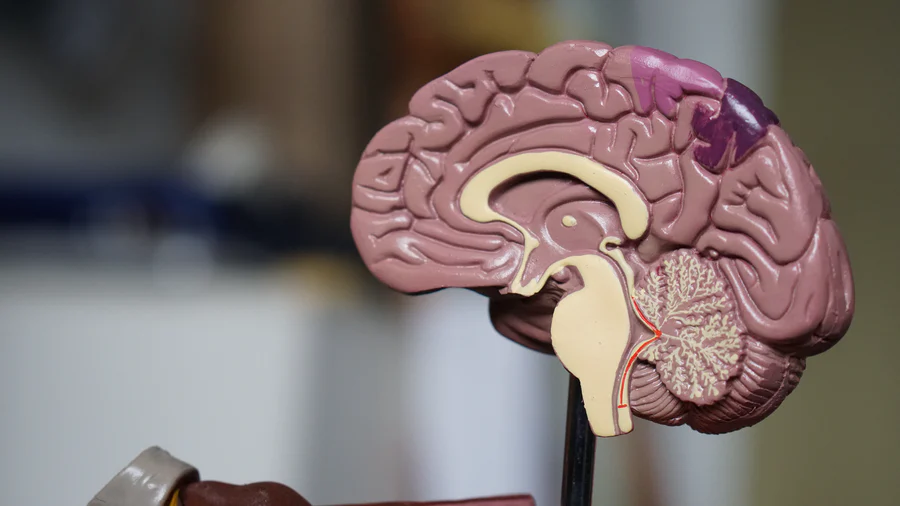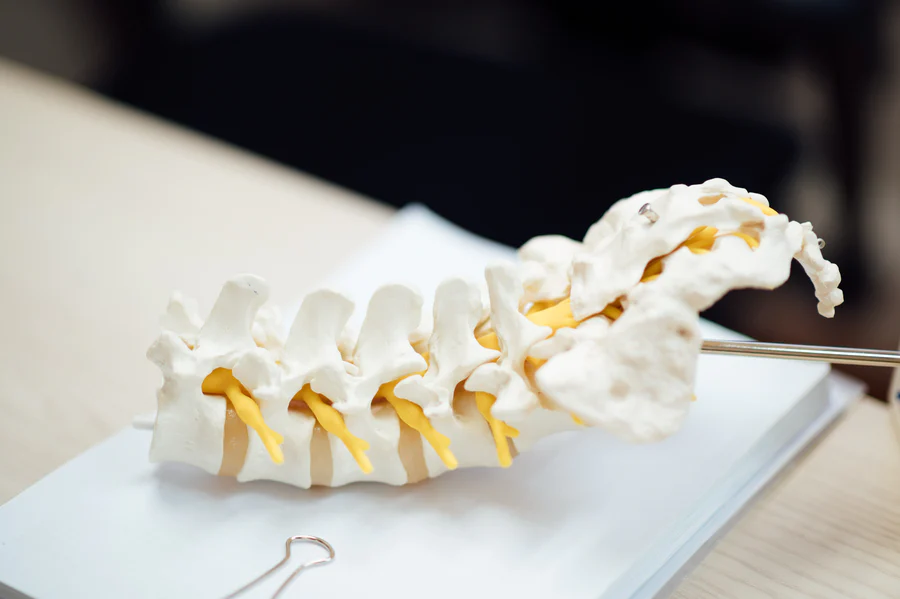Riya Patel
Biology 🧍
13 resourcesSee Units
Components and Function of the The Nervous System
What is the Nervous System?

Image from Unsplash
The nervous system is a body system that is made up of nerves and specialized cells, which are called neurons. Neurons transmit signals 💥 between different parts of the body. Due to this, the nervous system controls, regulates, and communicates all signals within the human body. There are two parts to your nervous system: the Central Nervous System (CNS) and Peripheral Nervous System (PNS).
The Central Nervous System
The central nervous system is composed of your brain. The brain is the main control center 🎛 for actions such as movement 👋, sleep 😴, and hunger 😋. Your brain receives and interprets signals from other parts of the body, as well as from the external (outside) world.
Parts of the Brain 🧠

Image from Unsplash
Cerebrum
The cerebrum is the largest part of the brain. It helps interpret touch and other sensory signals. It also regulates speech 💬, emotion, reasoning, and learning.
Cerebellum
The cerebellum coordinates muscle movement 💪 and balance 🏋. It is why we can perform actions like walking, riding a bicycle, and dancing.
Brainstem
The brainstem is responsible for postural control 💁, muscle tone 💪, and eye 👀 movement. This allows us to sit up straight and look to our right and left.
Diencephalon
The diencephalon is a small part in the back 🔙 of the brain that is hidden from sight 👁 (if seen from the front). It consists of the thalamus, which controls our awareness of pain 😣 and screens incoming signals💥. The hypothalamus is also part of the diencephalon, and it controls body temperature 😷, appetite, emotions, and other automatic functions.
Lobes of the Brain
Frontal Lobe
- Located at the front of the brain
- Controls personality and behavior
- Controls emotions
- Controls body movement
- Controls judgment making and problem-solving
- Controls speech
Parietal Lobe
- Located at the top of the brain
- Controls the interpretation of language
- Controls our senses
- Controls perception—both spatial and visual
Occipital Lobe
- Processes visual information
- Controls the interpretation of vision
- Colors, movement, and light
Temporal Lobe
- Lies on the sides of the brain
- Controls our understanding of language
- Controls hearing and memory
The Spinal Cord (Peripheral Nervous System)

Image from Unsplash
The spinal cord is that pathway for information connecting the brain and the peripheral nervous system. As the spinal cord travels down the vertebral column, the spinal nerves branch 🌴 off between each vertebra.
The Limbic System
The limbic system regulates basic drives and screens 👀 information, which enters the cerebral cortex. This system consists of the hippocampus, which creates new memories, and the amygdala, which integrates both memory and emotion.
The Autonomic Nervous System
Sympathetic System
The sympathetic nervous system helps make bodily adjustments to prepare the body for emergencies 🚑. This is where the “flight” or “fight” response 🙀 is activated through the release of adrenaline from the adrenal gland, increase in heart rate💓, and widening of blood vessels.
Parasympathetic System
The parasympathetic system functions are opposite to the sympathetic system. This is known as the “rest and digest” response. It helps the body return to its normal state after the sympathetic system is activated ✅.
💡 To remember these systems, think of the phrases “fight or flight” and “rest and digest”!
The Somatic Nervous System
The somatic nervous system connects the central nervous system to muscles, tissues, and skin. Afferent, or sensory neurons, move impulses to the central nervous system. From here, efferent neurons take this signal to the muscles and other organs.
Alzheimer’s Disease
Alzheimer’s Disease is a progressive neurological disorder caused by the death of brain cells which results in memory loss 👇 and cognitive decline.
Some defining characteristics of Alzheimer’s disease are:
- Decline in cognitive ability
- Reduced ability to take in and remember new information
- Impairment to reasoning, complex task, and judgment
- Impaired visuospatial abilities
Epilepsy
Epilepsy is a central nervous system disorder causing abnormal brain activity such as seizures 💫 and periods of unusual behavior. Disruptions in electrical activity in the central nervous system set off seizures, which cause nervous system symptoms such as heart palpitations.
Important Vocabulary to Review 🚨
- Nervous System
- Central Nervous System
- Peripheral Nervous System
- Cerebrum
- Cerebellum
- Brainstem
- Diencephalon
- Frontal Lobe
- Parietal Lobe
- Occipital Lobe
- Temporal Lobe
- The Spinal Cord
- The Limbic System
- The Autonomic Nervous System
- Sympathetic System
- Parasympathetic System
- The Somatic Nervous System
- Alzheimer’s Disease
- Epilepsy
Conclusion
That’s all for the nervous system! For those of you who are visual 👁 learners, check out Fiveable’s Overview of the Nervous System and the Neuron to review the material discussed in this chapter. For those of you who are more interactive ✋, check out our Nervous System Slides. Finally, to recap your knowledge of the nervous system, check out the Nervous System Video Review!
🤝Connect with other students studying biology with Hours
Browse Study Guides By Unit
🔬Cells
⚙️Biological Processes
🧍Human Body Structures
The Nervous System
- Components and Function of the The Nervous System
- What is the Nervous System?
- The Central Nervous System
- Parts of the Brain 🧠
- Lobes of the Brain
- The Spinal Cord (Peripheral Nervous System)
- The Autonomic Nervous System
- Parasympathetic System
- The Somatic Nervous System
- Important Vocabulary to Review 🚨
- Conclusion
👨👩👦Genetics
🐒Evolution

Fiveable
Resources
© 2023 Fiveable Inc. All rights reserved.